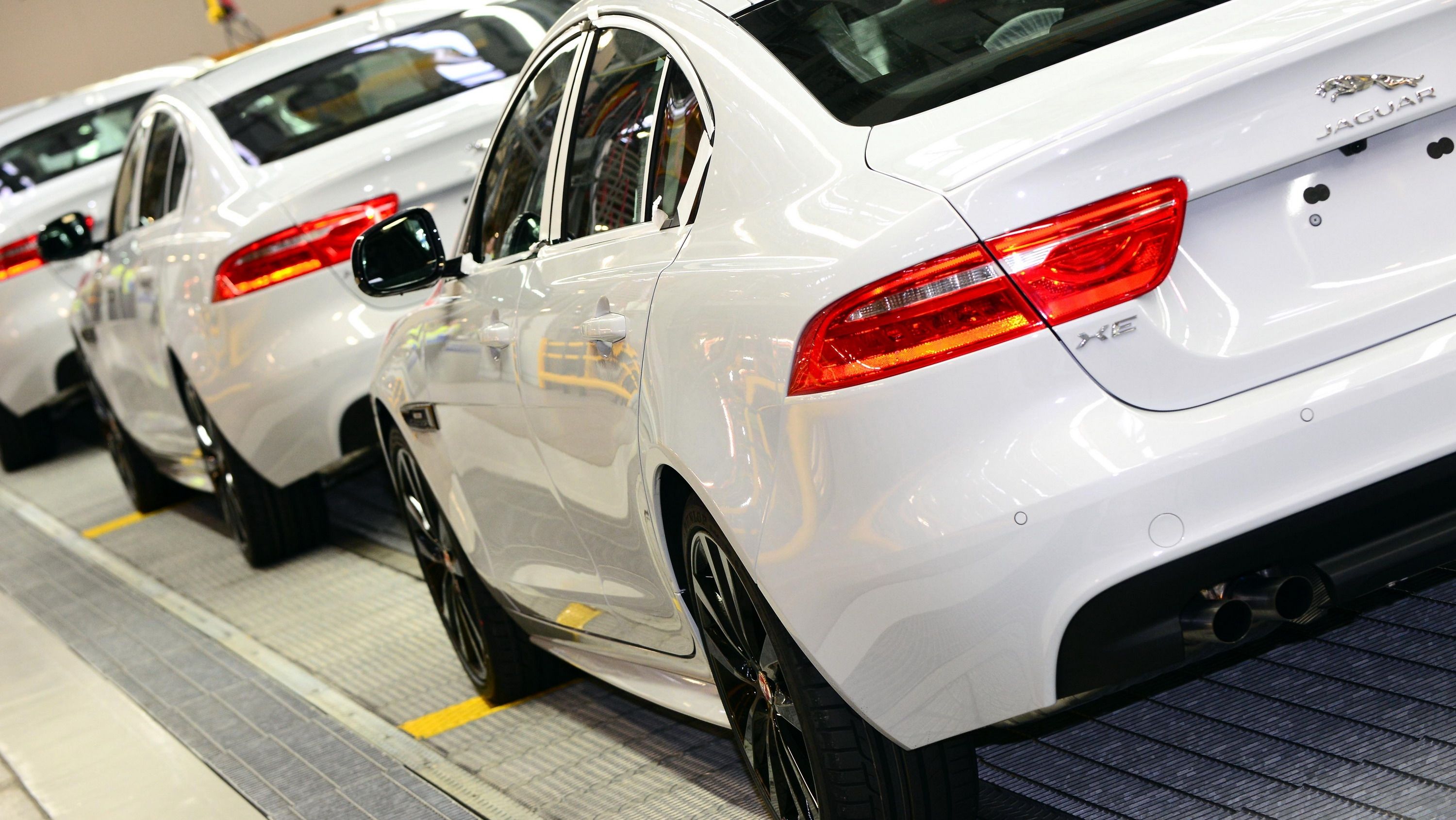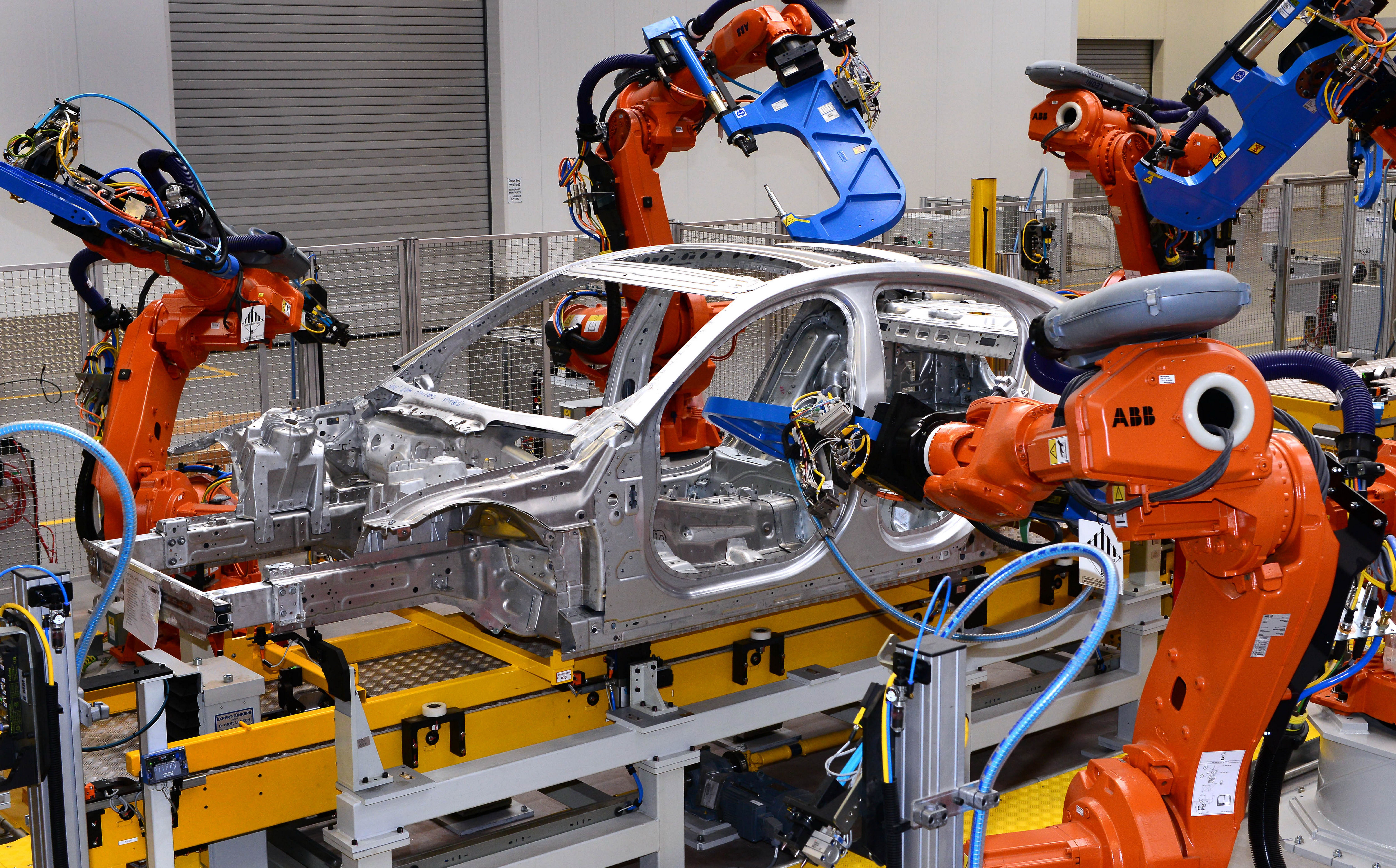The 2016 Jaguar XE doesn’t go on sale in the U.S. until next year, but it will soon be ready for European customers to enjoy, now that production has commenced at Land Rover’s->ke46 Solihull assembly plant. Jaguar’s new entry-level sedan is a part of a £500 million ($734 million) investment to the plant – the largest in the plant’s 70-year history. The XE->ke3138 is the first Jaguar->ke39 ever to roll off the Solihull line, but it certainly won’t be the last.
This investment cost was required to build the “factory within a factory” where the XE is assembled on a dedicated production line, even though the plant also builds the Range Rover->ke469, Range Rover Sport->ke4087, Land Rover Discovery (LR4)->ke511 and Land Rover Defender->ke1858. In total, the upgraded Solihull factory has 1.7 million square feet of space allocated to production of the Jaguar XE, which includes an aluminum body shop that Jaguar claims to be the largest in Europe.
Aluminum is crucial to the construction of all current Jaguar and Land Rover models, and the XE continues this trend. During its launch last year, Jaguar said that the 2016 XE will be the most rigid sedan->ke142 it has ever built, and it goes a step further by stating that “no other vehicle in the mid-size segment contains more aluminum” with a body that consists of 75 percent aluminum. The XE’s lightweight, aluminum-intensive monocoque architecture will also be used to underpin the upcoming 2016 Jaguar F-Pace SUV, which will also be built at Solihull.
Continue reading to learn more about the 2016 Jaguar XE.
Why it matters
Slotting in beneath the XF and XJ sedans, the 2016 Jaguar XE rounds out Jaguar’s lineup of luxury sport sedans, and more importantly, it gives Jaguar a promising new model that will be tasked with going up against established sedans like the BMW 3 Series and Mercedes-Benz C-Class.
2016 Jaguar XE
Read our full review of the 2016 Jaguar XE here.


